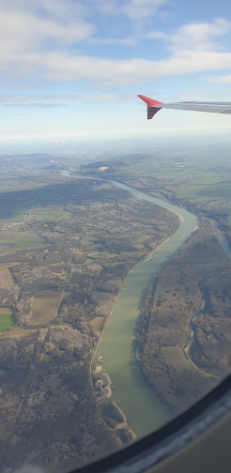 Small travel lexicon Small travel lexicon
The second national language is English followed by French and / or German.
Towards the beginning of the 19th century there was a revival of the Czech language which had gradually been replaced by German.
Hello: dobrý den
Goodbye: nashledanou.
Thank you: děkuji
Useful numbers
112 single European emergency (police, ambulances, firefighters)
150 firefighters from the Czech Republic
155 emergency medical services
158 police of the Czech Republic
Usual service hours
Stores: 9 a.m. - 6 p.m. working days 9 a.m. - 1 p.m. Saturday
Shopping centers are also open on Sundays
Banks: 8 a.m. - 6 p.m. working days
Pharmacies: like stores, in large cities (regional capitals) open 24/7
The telephone network will keep your usual plan, so no problem for calls or for mobile networks (data)
Transport
These 2 cities are very well served by public transport, so you can easily do without a car during your stay. There is rarely more than a 10-minute walk to get from one interesting place to another, which will leave you free to observe the many beautiful facades.
Jízdní řády IDOS is an android software that will allow you to easily find the schedules of trams, buses and metro from your position to the desired location and even plan your trips for the next day.
Local currency
You will have to plan to change your euros to the Czech crown at Vienna airport, but it is also possible to find exchange offices in the city. You should know that it is always to your advantage to convert your money into your usual bank in advance. The current exchange rate is around 1 Euro for 25.52 Czech Koruna (Czk).
The trip
It takes around 1 hour and 45 minutes by plane from Brussels or Paris to Vienna. From there, you will need to take a means of transport (car rental, train or taxi) to Olomouc or Brno.
Olomouc
Olomouc is the 6th largest city in the Czech Republic. It was the capital of Moravia and is currently considered the most beautiful city in the Czech Republic.
You can find there among others:
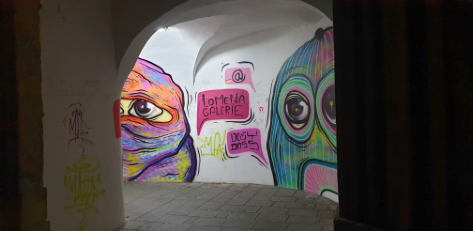 In the historic center of the city. In the historic center of the city.
On the lower square (Horní náměstí square), the town hall, symbol of the economic and political importance of the old royal capital, with its tower and its astronomical clock (600 years old, it still serves as town hall at present) its construction began in 1378. The tower is accessible to visitors and exhibitions dedicated to the town hall and its clock are visible on the second and third floors.
The column of the Holy Trinity
(UNESCO heritage since 2000) is made up of baroque statues grouped in a single building. It is 32m high (the tallest column in Central Europe. There is a chapel at its heart accessible during the summer season.
The statue of Caesar, the representative on a horse holding in his right hand (according to a local legend) the documents containing the charter of Olomouc. Below him are two statues of bearded men symbolizing rivers, the Danube and the Moravian.
You will also discover in the city many Baroque statues and fountains as well as several churches and chapels. (Saint-Maurice church, late Gothic church dating from the 15th century with an interior rebuilt in 1745 in baroque style, Saint-Michel church in early baroque style built on the site of a Gothic church in the years 1676 -1702, as well as many other works of architectural art).
The Primavesti villa, built in Viennese Art Nouveau style, the interior of which was built by several renowned artists of the time (Anton Hanak, Josef Hoffman and Gustave Klimt helped decorate this rich and amazing interior). There is also currently a restaurant and a gallery.
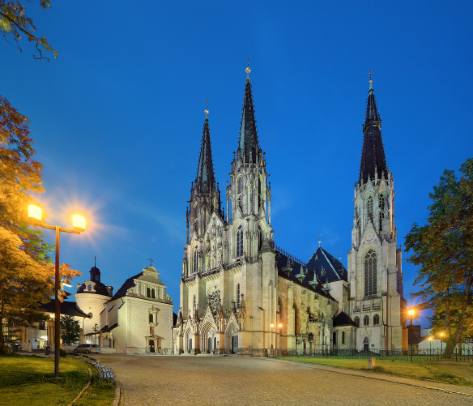 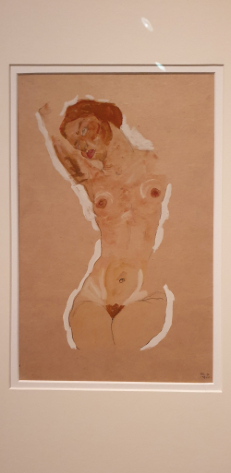 The Archdiocesan Museum The Archdiocesan Museum
(one of the three exhibition places belonging to the Art Museum of Olomouc) houses a permanent collection of paintings, sculptures as well as pieces of religious art from the 12th to the 18th century. During the visit you can admire the ruins of the palace of the Moravian bishops which have been preserved under the current palace. Thanks to its symbolic value and its important role in European history, it holds the European heritage label.
Next door, Saint-Wenceslas Cathedral is also worth a visit. Its construction took more than 700 years and the last additions in neo-Gothic style date from the end of the XIX century according to the directives of Gustav Meretta. It is part of the essential panorama of Olomouc its third tower of about 100 m is the tallest in Moravia. You can see in its crypt an exhibition and also the beautifully crafted coffins of the bishops of Olomouc.
If you are close to Christmas, do not forget to come and taste the different punches as well as the mead served hot which will make you easily endure the seasonal temperatures, as well as its magnificent local Christmas market.
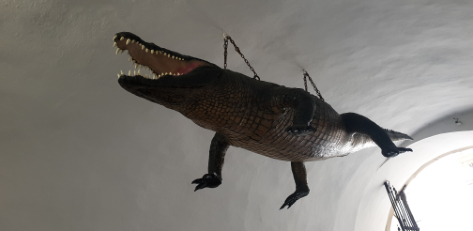 Brno Brno
Brno has long been the center of administrative power. It is the capital of Moravian wine. Larger than Olomouc it will nevertheless allow you to make the majority of your trips on foot and / or by public transport.
The old town hall is the oldest civil building in Brno. Today there is still the possibility of getting married. It had become too small in 1935, when the new town hall was built.
In the porch, the entrance to the old town hall, you will see a gigantic hanging "dragon". It is just over 100 years old and the original is still visible. Legend has it that a "dragon" terrorized the residents of Brno until one day a butcher had a great idea. He took a dead sheep and stuffed its belly with lime and went to carry it near the river and the den of the monster. The dragon having devoured the animal was taken with a monumental thirst. So he went to the nearby river to drink. Because of the mixture of lime and water, it swelled until it burst. It’s since that day that we can see her body hanging in the town hall.
I found this city surprising in more ways than one. There is something for all tastes and all ages. Cultural city par excellence with its many museums, architecture, gastronomy. Visit and interesting site, 6 modern and old theaters find their place there. In one of them, the Mahen Theater, Edison installed electricity in 1880.
If you are in holiday season you can take advantage of the skating rink in front of the superb governor's palace on Moravské square where the Museum of Decorative Arts is held.
Like in Olomouc, warm up with a good hot mead or a spice punch and take advantage of its Christmas market divided into four parts.
Several must-sees in this city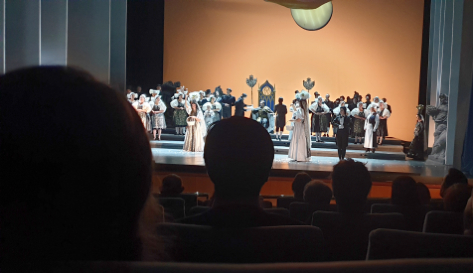
Saint Peter and Paul cathedral
The cathedral was built on a hill called Petrov in the early 12th century. It covers a Romanesque rotunda from which one can still see a period window. It has been reconstructed 3 times (the interior is Baroque and the exterior Gothic) and in the cathedral wall you can see a curiosity: the tomb of a master brewer.
Alphonse Mucha sang there as a child at heart in the 1870s. You can also see an outdoor pulpit which would have been built for the arrival of Jean de Capistran in view of the crowd that it would have generated although it had actually built 50 years after its arrival.
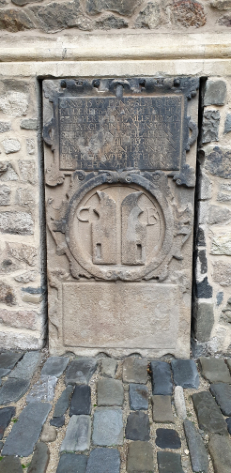 It may surprise you that the bell rings at noon at 11 a.m. During the attack of the Swedes, during the war of 30 years due to the revolt of the Protestant Czech subjects of the house of Habsburg, the siege of the city of Brno had been underway for already three and a half months when the Swede Tortenson, who had started drinking and suffered from gout, gathered his officers and warned them that if the siege was not finished at noon the next day, they would leave. Just before the Swedish victory, the inhabitants of Brno sound midday when it is only 11 am and the siege was lifted just as the Swedes set foot on the rampart. Since that time it has continued to ring from noon to 11 a.m. It may surprise you that the bell rings at noon at 11 a.m. During the attack of the Swedes, during the war of 30 years due to the revolt of the Protestant Czech subjects of the house of Habsburg, the siege of the city of Brno had been underway for already three and a half months when the Swede Tortenson, who had started drinking and suffered from gout, gathered his officers and warned them that if the siege was not finished at noon the next day, they would leave. Just before the Swedish victory, the inhabitants of Brno sound midday when it is only 11 am and the siege was lifted just as the Swedes set foot on the rampart. Since that time it has continued to ring from noon to 11 a.m.
Attention: The following 2 places are to be reserved for an informed public.
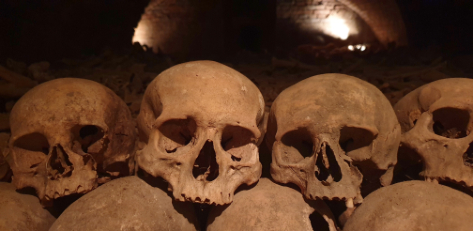 The ossuary The ossuary
In 1778, the Empress Queen, Marie-Thérèse, forbade burial in churches. She further ordered that cemeteries be placed away from homes for hygienic reasons. In 1854, in Brno, the cemeteries were moved outside the city to ossuaries. The ossuary was forgotten for two centuries and was finally found in 2001. It contained the remains of more than 50,000 people.
It was decided to make it both an accessible place of memory where part of the bones were placed in columns and along the walls.
Very impressive place, but one that exudes peace and deep respect for the dead.
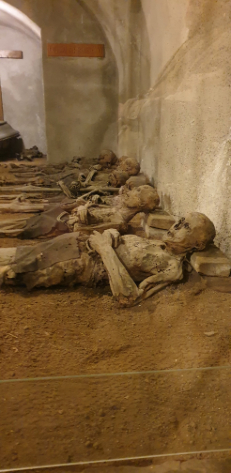 The Capuchin crypt The Capuchin crypt
Under the Capuchin church we find a crypt which was used from 1656 to 1784 for the rest of the Capuchin friars and benefactors of the order. The bodies that stand out there have been naturally mummified thanks to the ventilation system. There are more than 150 Capuchins and 50 benefactors. Besides the mummies of the order, the story of one of the benefactors whose mummy is there is very interesting. That of Commander Baron František Trenk. He was a cruel man who had a tumultuous life. But at the end of his life, he repented and wished to be buried on the ground like the Capuchins. Among other things, you can notice his face reconstructed from his skull using modern techniques. The sight of these mummified bodies will certainly leave you indifferent.
The Tugendhat villa
It was built in the years 1928-1929 by the architect Ludwig Mies van der Rohe for the spouses Greta and Fritz Tugendhat. Greta had received from her father Alfred Lôw-Beer the park adjoining the villa as exclusive building land due to its panorama of the city of Brno in March 1929. It was decided to build this magnificent villa, a real work of art designed in functional style. Construction began in mid-1929. It has large open spaces without load-bearing walls. which have been replaced here by columns which start from the cellars of the villa and support the upper floors. All the doors of the owners' part are 3m high unlike the staff doors which they are normal. You can also admire large picture windows with the property of going down into the ground entirely leaving a large opening towards the park. The ventilation and heating system was also remarkable for the time with in the cellar the possibility of adjusting the temperature as well as the ventilation, air conditioning of the time. Everything is elegant with precious materials like onyx from Morocco, limestone tuff from Italy, rare tree species from South East Asia. It is accessed via the third floor, called the bedroom floor, and faces north-east. The front of the garden faces south-west and is accessed by a terrace with a large staircase. The fitted area is 907 m2 and the living area 237m2. Do not forget to book your visit well in advance if you wish to visit this superb architectural work (allow 6 months in advance approximately).
Email: petr.dvorak@tugendhat.eu
Site: www.tugendhat.eu3
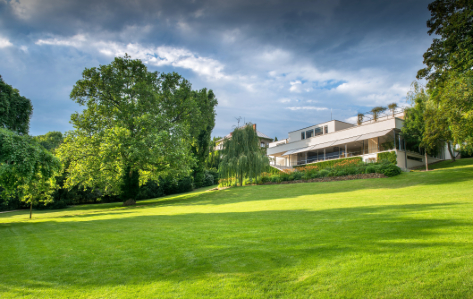
Spielberg Castle
Castle dating from the 13th century and rebuilt in the 17th and 18th century, it was successively an imposing stronghold and then a prison for political prisoners as well as for the most dangerous criminals.
Jean Baptiste Drouet was imprisoned there and tried to escape with his sheets. When he fell, he broke his legs and was exchanged for other prisoners in 1795.
In 1880 Joseph II abolished the death penalty and transformed the casemates of Spielberg castle into a horrible prison. Above, the prisoners were installed on wooden planks with a skylight above, but below the worst criminals were chained in darkness and humidity in wooden boxes. Abolished by her brother, she became a political prison much later.
The deepest well in Brno is there, it is 114 meters deep.
There is 1 carillon composed of fifteen bells in a belvedere of the corner tower of the castle composing the baroque chapel of the Holy Trinity. During your visit you will see a reconstructed baroque pharmacy and while climbing the fortifications enjoy a magnificent panorama.
During the year the castle is the seat of multiple performances, concerts, theater play, etc.
But the city conceals many other interesting curiosities like a fallout shelter dating from the Cold War, the undergrounds of the city made up of the coin-operated cellars and the labyrinth dug by the merchants of yesteryear, the Brno dam, the observatory & planetarium , the science park, the zoo,…
Good visit.
If you wish to take advantage of your visit in the company of an experienced guide, and to visit Prague, Brno, or the region of South Moravia (the main wine region of the country; where you can visit, among others, the site of the Battle of Austerlitz, very close to Brn) we recommend Patrik Michaud
https://www.michaud.cz/fr/
|
 Small travel lexicon
Small travel lexicon In the historic center of the city.
In the historic center of the city.
 The Archdiocesan Museum
The Archdiocesan Museum Brno
Brno
 It may surprise you that the bell rings at noon at 11 a.m. During the attack of the Swedes, during the war of 30 years due to the revolt of the Protestant Czech subjects of the house of Habsburg, the siege of the city of Brno had been underway for already three and a half months when the Swede Tortenson, who had started drinking and suffered from gout, gathered his officers and warned them that if the siege was not finished at noon the next day, they would leave. Just before the Swedish victory, the inhabitants of Brno sound midday when it is only 11 am and the siege was lifted just as the Swedes set foot on the rampart. Since that time it has continued to ring from noon to 11 a.m.
It may surprise you that the bell rings at noon at 11 a.m. During the attack of the Swedes, during the war of 30 years due to the revolt of the Protestant Czech subjects of the house of Habsburg, the siege of the city of Brno had been underway for already three and a half months when the Swede Tortenson, who had started drinking and suffered from gout, gathered his officers and warned them that if the siege was not finished at noon the next day, they would leave. Just before the Swedish victory, the inhabitants of Brno sound midday when it is only 11 am and the siege was lifted just as the Swedes set foot on the rampart. Since that time it has continued to ring from noon to 11 a.m. The ossuary
The ossuary The Capuchin crypt
The Capuchin crypt




































